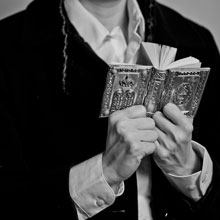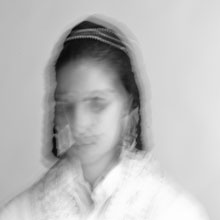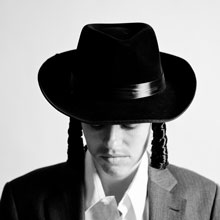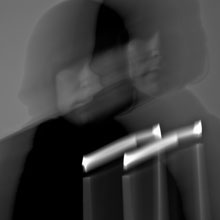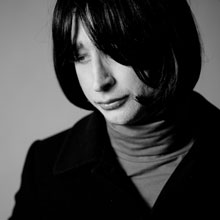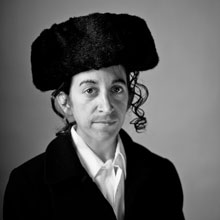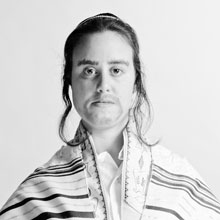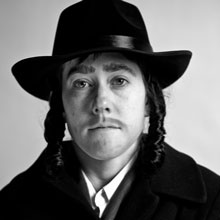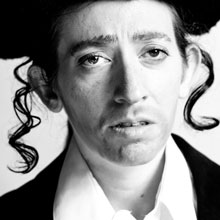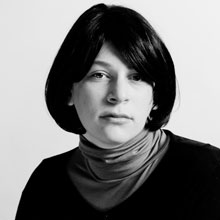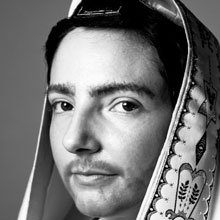Observe
projectobserve@gmail.comArtist Statement:
OBSERVE is a collaboration between Rachel Eliza Griffiths and Maya Pindyck. As two Jewish artists, we are interested in the ways gender is linked with ritual in Judaism. Using black and white photography—pointing to the dichotomous aspects of religion—we invite Jewish subjects to transform into an observant Jew of the opposite sex. Through cross-dressing, makeup, and the option to enact a religious observance, both artists and subjects consider what it means to access a gender-bound tradition and to blur what seems so clearly defined. The process and resulting photographs play with outward appearances, posing a simple question to the viewer: What do you observe?
Observations from Participants:
“Seeing myself in the costume and dressed up as a male made me more aware of my own Jewish features and my connection to my ancestors. An interesting experiment in being the ‘other.’”
“Putting on the crisp-collared white shirt and the rich navy blue velour jacket, crowned with a shtreimel and perfectly curled peyis, I felt adorned and strong… As I have become a more religious Jew, the gender binary is often given a divine validation, far more difficult to resolve than the fallible human constructs of gender. Being able to take on this male role made me feel less ambiguous.”
“The makeup, I suppose the transformation, left me more distant, withdrawn, and subdued. I felt trapped behind the woman… When I had the candles, I felt they were an expression of me. I somehow identified with the candles.”
“How bizarre—is that me? Is that my brother?”
“I expected to feel empowered, tough, strong, confident, and I was thinking how to embody these attitudes while being photographed. Part of that meant opening my chest, tilting my head upward and stiffening my lower lip.”
“I thought back to my own Bat Mitzvah process… While holding the prayer book, it was easy for me to let my mind and eyes wander because that’s what I remember feeling…”
“This brought up feelings of being restricted, confined, sad, and especially angry.”
“I can’t say that the orthodox Jewish community is a place where I feel very safe or welcome, even though I was raised in and out of it. In taking part in this project, I had a fair idea of how I’d look: uncomfortable, confined, frustrated, and a touch hostile. I’m not a pretty girl (said Mama), but that’s fine. Baruch Hashem, I don’t have to be.”
“I felt, within the bulky clothes and beard, still myself—that the ‘me’ in there found a way to shine through, and that it was almost impossible to suppress it. I also realize I don’t know much about what it’s like to be a man!”
“As I dressed in women’s clothing, wore a wig, and put on makeup, I began thinking about the diminished role that women must play in ultra-orthodox society. Today, as I changed my appearance, I changed my demeanor.”
“I actively observe, and we’re egalitarian, so I’m pretty connected to Jewish ritual and spirituality. But if I were forbidden to participate in certain rituals or observances, I think I would feel it more closely because I’m coming from the position of authority and power. I’m not ordaining it that way, of course, but as a male, I come to Judaism with privilege. ”
“How curious to transform into a man on a Sunday morning.”
“I’m perplexed about my persona while “performing” an identity of a male Jew. I was not thinking about women and gender, and I experienced it as a relief. I cherish my need to experience changes.”
